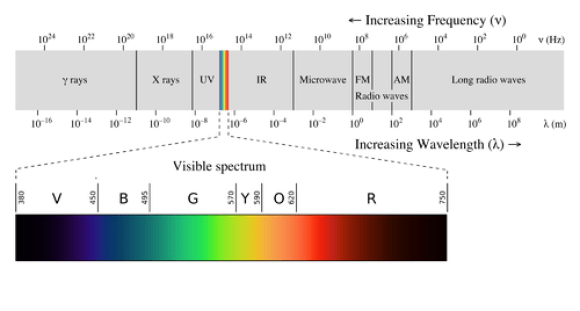Unlocking the Terahertz Gap with Graphene Technology Innovations
Written on
Chapter 1: The Marvel of Graphene
Graphene's extraordinary attributes enable scientists to harness elusive frequencies within the electromagnetic (EM) spectrum. Recent research reveals that a groundbreaking device crafted from graphene has the potential to amplify signals within the terahertz gap—an unused frequency range between infrared light and microwaves.

This innovation promises significant advancements in various fields, particularly in medical applications, as it facilitates non-invasive and non-destructive testing. Additionally, researchers envision its use in ultra-high bandwidth wireless networks, vehicle control systems, atmospheric pollution assessment, inter-satellite communications, and spectroscopy.
Section 1.1: Understanding the EM Spectrum
Electromagnetic radiation consists of oscillations in electric and magnetic fields, which propagate at right angles to one another. The EM spectrum encompasses all frequencies and wavelengths of radiation, including radio waves, microwaves, infrared, visible light, ultraviolet light, x-rays, and gamma rays. Thus, devices like radios, microwave ovens, and medical x-ray machines utilize this fundamental phenomenon.

Despite the vast range of the EM spectrum, a narrow band situated between infrared and microwave frequencies—approximately 10¹² Hertz—has remained largely unexplored. This frequency range, known as the terahertz gap, presents challenges for existing technologies due to limitations at the nanoscale, leaving a void in its utilization.
Subsection 1.1.1: The Terahertz Gap's Unique Potential
The terahertz gap is intriguing for physicists due to its vast potential applications. This frequency range is non-ionizing, making it a safer alternative to x-rays for medical imaging. Furthermore, terahertz frequencies excel in security scanning, offering enhanced resolution while penetrating opaque materials. Additionally, significant physical phenomena occur in this range, and scientists are missing critical insights without access to it. Remarkably, this frequency band can transmit data at speeds 20 times faster than current WiFi technologies.
Chapter 2: Graphene Amplifiers Revolutionizing Access
Thanks to recent advancements, physicists have discovered a method to tap into this elusive frequency range. By combining graphene with superconductors, they have engineered a material capable of absorbing terahertz frequencies and emitting amplified signals, paving the way for a variety of applications.
The first video titled "M. Bonn - Graphene in the (Terahertz) Microwave" delves into the relationship between graphene and terahertz technology, providing insights on how this material can revolutionize applications within this frequency range.
The device consists of a high-temperature superconductor sandwiched between two graphene layers, a one-atom-thick carbon structure. Graphene's thinness allows it to be nearly transparent to various types of radiation, including terahertz frequencies. It also boasts several remarkable characteristics, such as possessing free electrons due to the unique bonding of carbon atoms in a hexagonal lattice.
The second video, "The Graphene Revolution: Faster, Energy Efficient Electronics and Terahertz Devices," explores how these advancements in graphene technology will lead to faster, more efficient electronic devices and systems.
Superconductivity is a phenomenon wherein a material exhibits zero electrical resistance when cooled below a certain temperature. High-temperature superconductors can achieve this state above -200°C, making them more practical for real-world applications. When combined with graphene, these superconductors trap the free electrons, energizing them when terahertz radiation interacts with the material, resulting in an amplified signal through the photoelectric effect.
Now that the terahertz gap can be effectively bridged, a new era of devices is emerging, poised to transform communication, medical diagnostics, security, and numerous other fields.